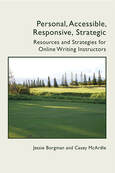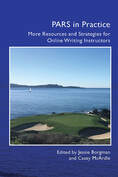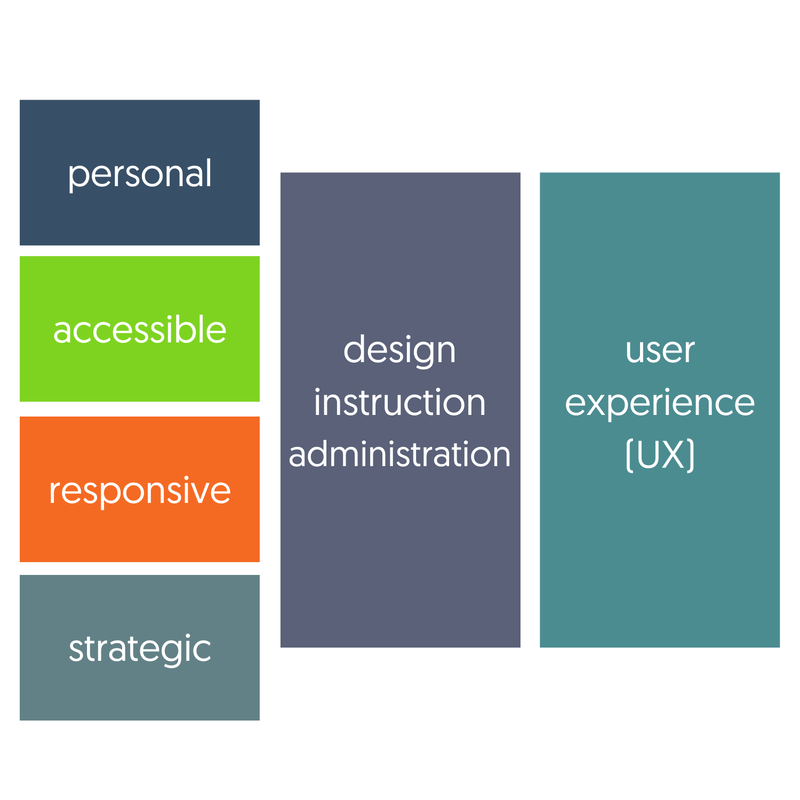PARS Book Trilogy

Personal, Accessible, Responsive, Strategic: Resources and Strategies for Online Writing Instructors (2019)
(link to book) |

|

PARS in Charge: Resources and Strategies for Online Writing Program Leaders (Coming Soon in 2023)
|
PARS
|
We believe there are four elements (PARS) that can allow you to create an accessible knowledge making space (online class):
We feel that if you apply all of these layers within each letter, you get a unique user experience where students will engage in an online space. We believe this equation is a simple one: PARS + UX = OWI. |

Online instruction doesn't have to be impersonal just because you never get to actually meet your students. In fact, being personal is one of the most important things you can do as an online writing instructor. Every instructor usually develops his or her own way of showing their personality online, but there are several direct ways instructors can make themselves more personable to their students.
- Don’t act like a computer/machine, be a human instead.
- Writing is personal and teaching is personal so make it that way in your online writing programs/courses.
- Focus your efforts as an administrator on making a connection beyond content delivery and help your instructors make a connection beyond teaching the content and assigning course grades.
- As an administrator, build a community in your department and help foster positive interactions between you and your instructors and encourage your instructors to do the same with their courses and students.

Being accessible is not just about ADA compliance. We view accessible similar to its many definitions: “able to be used or obtained,” “suitable or ready for use,” “available,” “obtainable.” Inclusion is also about things like making content mobile friendly to expand access, and about access in the economic sense as well. Further, access is about setting up an online space that works for you and your students so no miscommunication occurs and no queries go unanswered and everyone of all learning styles, preferences and ableness can access the course.
- Support your students with course materials they can understand and navigate
- Have accessible navigation in your LMS/CMS.
- If you are an administrator, be accessible to your faculty and staff
- If you are a teacher, be accessible to your students.
- Access should not be a barrier to learning!

Being responsive is the end gain of the previous three elements: you taking time to work with your students. You have made the class personal, established your credibility as an instructor, and made yourself available. All of these culminate in your ability to respond and collaborate with students. Just making yourself available is not responding or collaborating - responding is responding. You may set the schedule as the means of being available, but you still have to respond. By stipulating that you will return feedback and emails on various topics and assignments within a certain time frame, you can create a stable space where students know what to expect when it comes to your availability and their own. Responsive OWI is about establishing guidelines for how you’re going to respond to your instructors/students and when you’re going to respond to your instructors/students.
- Be clear on how, where, and when a class meets - be consistent.
- Be clear on which spaces you will use (classroom, software, LMS/CMS) and how you will use them.
- Be clear on how and when you will respond to emails and assignments.
- If you are an administrator, be clear on how department workflow systems will be used and when they will be deployed.
- Set expectations and follow them!

There are a lot of ways to use strategy in online writing instruction, but these three specific elements of being strategic in the online writing classroom seem most consistent: course design, instruction and administration. In designing and teaching the course, an instructor must be strategic, for all online instructors and their administrators must have a plan.
Strategic Design:
Strategic Instruction:
Strategic Administration:
Strategic Design:
- Plan your personal course design by being strategic about your use of images, text, contact information.
- Plan your accessible course design by simplifying your course navigation, creating assignments in multiple formats, caters to different learning styles, is accessible to screen readers.
- Plan your responsive course design by being clear about course meeting days and tines, response times for grades, and office hours.
Strategic Instruction:
- Plan your personal instruction strategy by making your presence known and connecting with the students so that they see you as a real live person and not just a computer.
- Plan your accessible instruction strategy by including and planning audio and visual components so students can access course material in a way that works for them.
- Plan your responsive instruction strategy so students know how and when they will receive feedback
Strategic Administration:
- Plan your personal administrative strategy and think about how you will show your faculty you are someone they can trust.
- Plan your accessible administrative strategy by making a plan for how you will help faculty with things they will need to be successful in their jobs
- Plan your responsive administrative strategy by including how and when you will communicate with faculty and staff.
